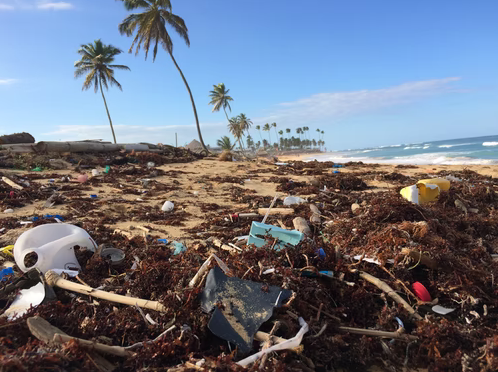Mental Health
How to Cope With Environmental Stress

Last Updated on May 21, 2024 by Joshua Isibor
What is Environmental Stress?
Environmental stress is defined as a shift in environmental conditions that might cause humans to experience discord, anger, irritation, or aggravation. The weather, level of noise, crowdedness, and light exposure are few examples of environmental stress. These phenomena may be natural but human-caused environmental stress can also be possible.
Environmental disasters like storms, droughts, floods, and fires are natural phenomena and occur regularly. On the other hand, environmental pressures such as the synthesis and release of novel chemical compounds are directly caused by human actions. These environmental forces wreak havoc on the resources that people and their economies rely on, as well as natural biodiversity and ecosystems.
The amount of environmental stress has risen dramatically as the human population, technical capabilities, and standard of living have all expanded dramatically. As a result, these factors have created a significant impact on human mental and physical well-being.
In this article, we will discuss how environmental stress and deteriorating air quality are creating problems for humanity and the ways to cope with environmental stress. This article will explain the types and symptoms of environmental stress and techniques to deal with these problems at home.
With every passing day, a multitude of serious issues is confronting city dwellers, which are caused by deteriorating environmental quality. This environmental pollution has the potential to harm all living creatures, thus creating mental and health problems for humanity.
Resultantly, you will be concerned about the safety of your family and neighbourhood; you will be concerned about your physical and mental health; you will lose faith in the government, environmental organizations, and non-governmental organizations (NGOs); you may experience financial difficulties, and your property may lose its market value as a result of environmental issues. All these factors will greatly influence your mental and physical health.
ALSO, READ 7 Tips to Improve Your Mental Health and Relationships
Therefore, it is very important to understand how to cope with environmental stress? Your social and financial life and family well-being greatly depend on these factors. Deteriorating environmental conditions can have a variety of influences, including how you feel, think, and act.
Causes of Environmental Stress
Environmental stressors are external forces that have the potential to limit productivity and ecosystem growth. These variables cause annoyance, depression, irritation, discord, and despair among living creatures. These factors could be natural, such as wildfires and windstorms, illness, and other organism-to-organism interactions, or man-made factors that can contribute to environmental stress.
The impacts of natural stress may benefit certain individuals, populations, and communities while causing harm to others. General causes of environmental stress include industrial activities, increasing traffic, agricultural activities –use of chemicals and pesticides on agricultural soil, explosive activities for mining and defence purposes, emission of carbon gases—Carbon dioxide, Carbon monoxide, and hydrochlorofluorocarbons. All these agents are responsible for the depletion of the ozone layer, causing an increase in the average Earth’s temperature.


i.Effects on Living Creature
Human-caused stressors of environmental disaster are the most severe phenomena, and they have a significant impact on species and ecosystems. They create severe damage to resources vital for the survival of humans and other living organisms. Environmental stressors can also be categorized on the level of the disturbance they cause. Wildfires, storms, floods and disease outbreaks are all examples of large-scale disturbances that have an impact on ecosystems. Based on intensity, severity and nature of environmental effects, they can be divided into the following categories:
ii. Effects on Humans
Environmental pollution has mostly physical effects on humans and can lead to severe long-term illness. Breathing problems, such as allergies and asthma, eye and nasal irritation, and various other infections are the most well-known diseases due to environmental disasters. Environmental pollution has been proven to be a major factor in the development of cancer skin cancer, hepatitis, typhoid, tissues’ injuries, and hormonal disruptions.
iii. Effects on Animals
Acid rain is one of the outcomes of environmental stress resulting in altering the chemistry of rivers and seas, rendering the water bodies poisonous for fish. An insufficient amount of ozone in the lower part of Earth’s atmosphere can cause respiratory issues in all animals.
iv. Effects on Plants
Acid rain and biodiversity loss can greatly damage the composition of plants and other species due to the absorption of harmful pollutants into the soil.
v.Effects on Ecosystem
Environmental stress, almost entirely caused by human activities, has a negative impact on the ecosystem, damaging critical layers of soil and exacerbating the problem in the top layers of the atmosphere.


What Are the 5 Types of Environmental Stress?
Environmental stressors are divided into different categories based on their nature and physical appearance. These categories are:
1. Physical Disasters
A type of environmental disorder in which humans experience a large amount of kinetic energy, resulting in habitat and ecosystem harm. Disruptive occurrences include hurricanes and tornadoes, earthquakes, volcanic eruptions, explosions, and trampling by heavy machines.
Wildfire is another sort of natural disaster that occurs when the biomass of an ecosystem is burned uncontrollably. People can start a wildfire, or lightning can do so naturally. Even if a less-severe wildfire does not devour much of an ecosystem’s biomass, it can kill many creatures by scorching them and poisoning them with toxic fumes.
2. Thermal & Chemical Pollution
Chemical pollution occurs when several compounds are present in high enough quantities in Earth’s atmosphere to cause physiological changes in living creatures, which can lead to toxicity and ecological change. Pesticides, gases like ozone and Sulphur dioxide, and poisonous metals like arsenic and mercury are all agents of chemical pollution.
Excess nutrients can also generate pollution by distorting productivity and other ecological functions in the land. Thermal pollution, on the other hand, is caused by releasing an immense amount of heat (thermal energy) into the Earth’s atmosphere. The release of very cold water from reservoir bases into warmer rivers can also generate thermal pollution.
3. Emission of Radiating Particles
Release of excessive ionizing energy results in environmental stress. Nuclear waste or explosions can emit radiation, causing the emission of radiating particles. Atomic particles like alpha rays, beta rays, gamma rays, and X-rays can damage the living tissues of humans and these particles can penetrate deeply into the human body. These are highly charged subatomic particles, causing skin cancer. Having proper disposal of atomic waste is a need of an hour to cope with environmental stress.
4. Emission of Biological Pollutants
Biological contaminants are substances in our environment that come from living things and can impair human health. Biological pollutants include pollen, insects, bacteria, and viruses, as well as human and animal hair, skin, urine, and other body components. The emission of biological pollutants in large numbers can generate other environmental disasters like water pollution and deteriorate the air quality due to the emission of bio-gas molecules. Bio-pollution may also result in a loss of natural beauty, as well as negative economic implications and health effects.


5. Noise Pollution
Any annoying or undesired noise that interacts with or hurts humans or wildlife is referred to as noise pollution. Noise pollution, although it is always there, receives less attention than water and air quality issues since it cannot be seen, tasted, or smelled. Noise from mining operations, explosions, and road traffic are frequently louder than natural noise. Noise pollution harms wildlife by lowering habitat quality, increasing stress levels, and obscuring other sounds. Species that rely on sound for communication or hunting are particularly affected by chronic noise exposure. Prey species that rely on noise to detect predators, such as bats and owls, may have reduced feeding patterns, decreasing growth and survivorship.
What Are the Symptoms of Environmental Stress?
Environmental stress has the potential to affect every area of our lives, including our emotions, behavior, cognitive abilities, and physical health. Stress affects every part of the body, but because people react to it in different ways, stress symptoms can vary from person to person. Physical, mental, and emotional responses are produced by the body in response to these environmental changes. General symptoms of environmental stress are:
- You will constantly feel insecure and unsafe about the health of your loved ones
- There would be uncertainty about your future physical and mental well-being in your thoughts
- Your family members and friends would argue on the severity of the environmental contamination and how to cope with environmental stress?
- People will lose faith and trust in government, environmental organizations, and NGOs
- You may face financial constraints due to environmental disasters
How Can We Reduce Environmental Stress?
There are different ways to deal with a stressful environment at home like:
- Use reliable sources of information to be informed about environmental contamination
- Connect with your family members and neighbours to raise awareness
iii. Find out how you can avoid or decrease your exposure to dangerous radiation
- Start educating the masses about the use of green energy resources
- Manage public campaigns about solid waste management and proper disposal of animal waste
- Use sunscreen to protect your skin from the sun’s harmful rays, for example, USA Hemp Pain gel, having anti-UV properties
How to Cope With Environmental Stress—Key Takeaways
Environmental stress is a matter of great concern for everyone. Because of the increasing population and ozone depletion at an accelerated rate, all the countries are concerned about the environmental changes and their survival. This is mostly because environmental degradation poses a threat to humanity’s survival. It is a need of the hour that initiatives to cope with environmental stress, on individual and community-level, must be promoted. Masses should be educated to follow SOPs so that the phenomena of environmental disasters can be minimized.
ALSO, READ HOW TO CULTIVATE A POSITIVE MENTAL ATTITUDE
Originally posted 2021-12-03 11:08:49.


-



 Text Messages8 months ago
Text Messages8 months agoBEST LOVE CONFESSION MESSAGES FOR HER OR HIM
-



 Sex Education24 hours ago
Sex Education24 hours ago10 Simple Hack to Make a Girl Send Her Nudes
-



 Text Messages8 months ago
Text Messages8 months agoHeart Touching RIP Uncle Quotes
-



 Health2 months ago
Health2 months ago5 Unknown Ways To Maintain Skin Health
-



 Text Messages8 months ago
Text Messages8 months agoBest Good Luck Wishes Before and After Surgery, for Family and Friends
-



 Text Messages8 months ago
Text Messages8 months agoFreaky and Dirty Paragraphs For Him Copy And Paste Yahoo
-



 Uncategorized6 days ago
Uncategorized6 days agoHOW TO FALL IN LOVE WITH YOURSELF
-



 Uncategorized1 month ago
Uncategorized1 month agoHOW TO KISS A BOY FOR THE FIRST TIME